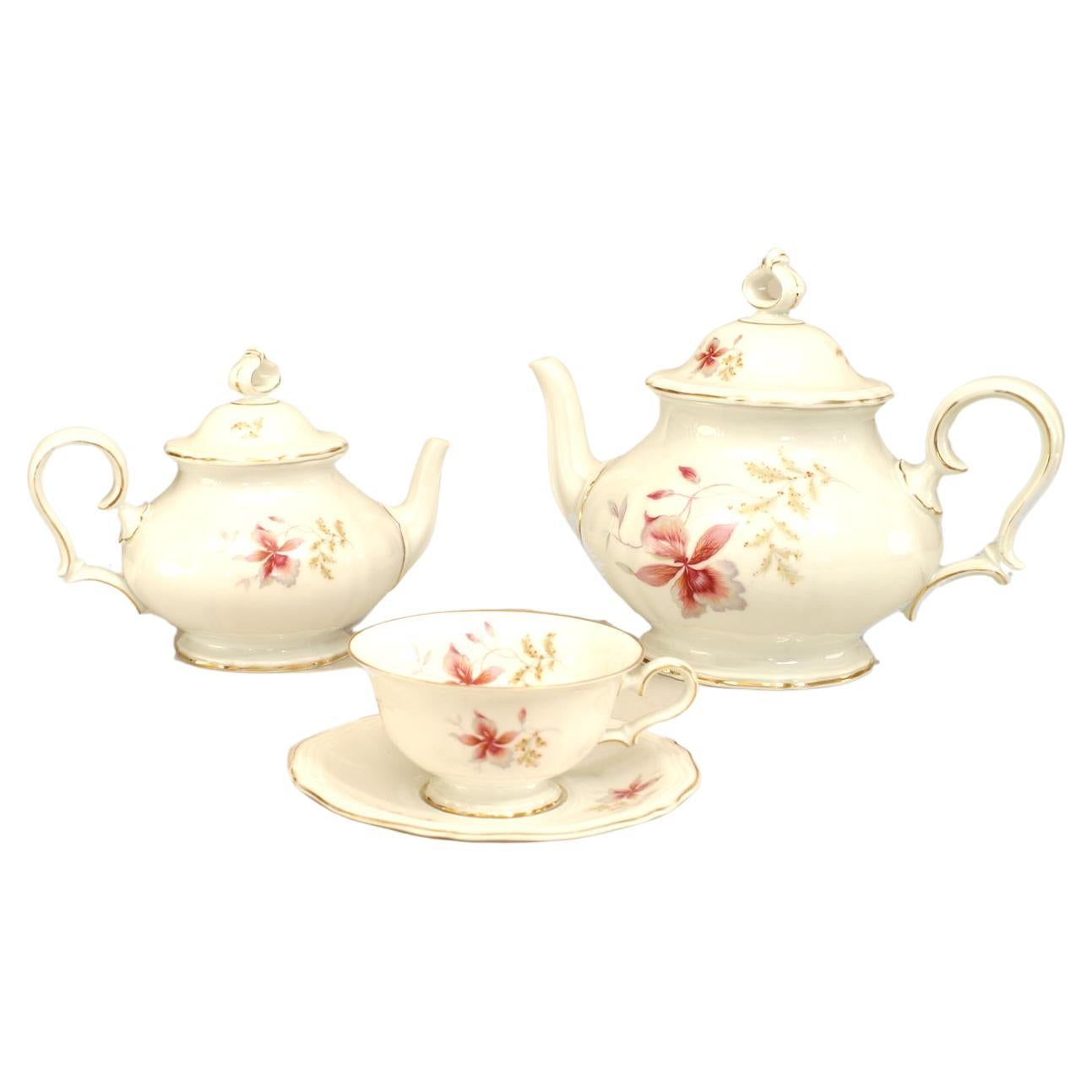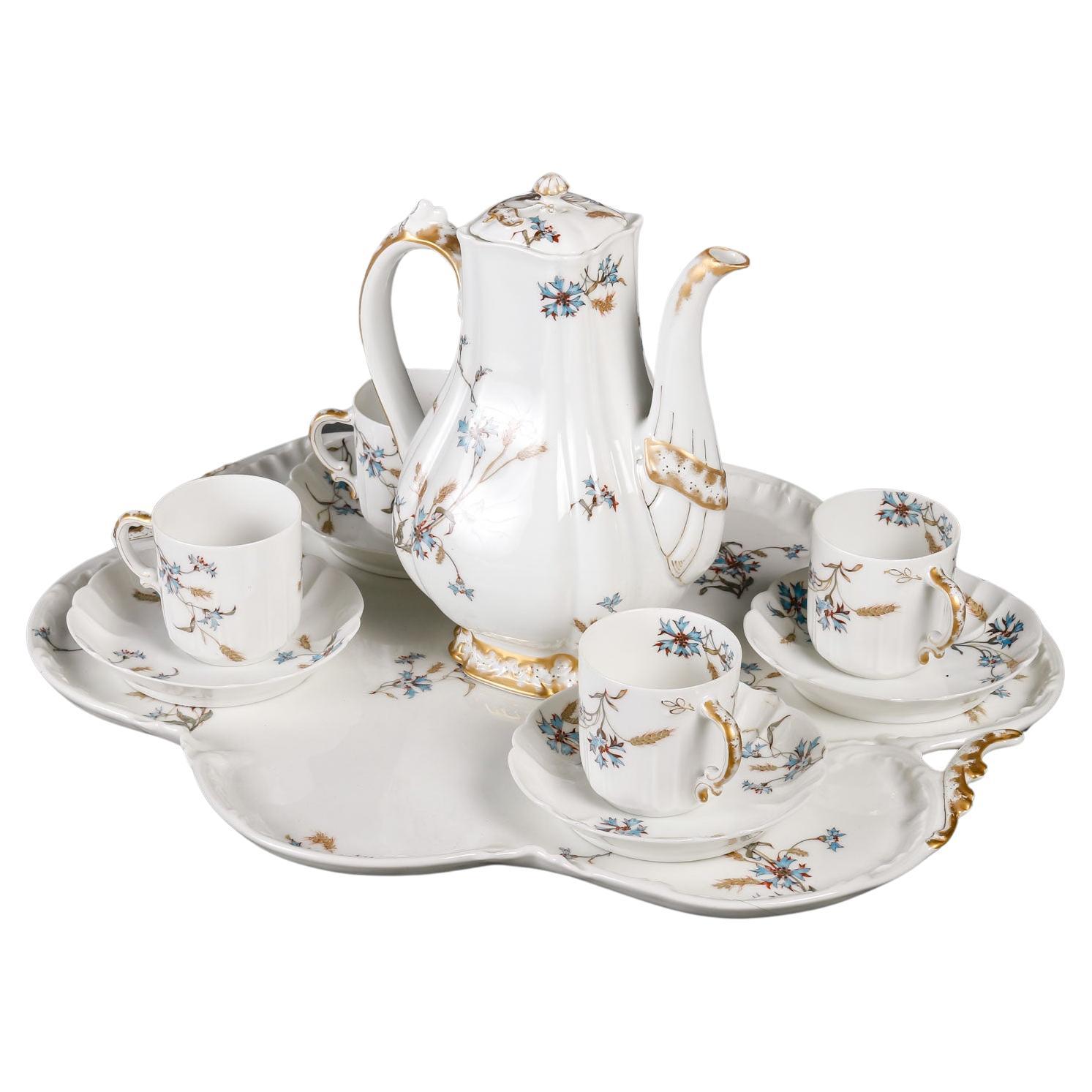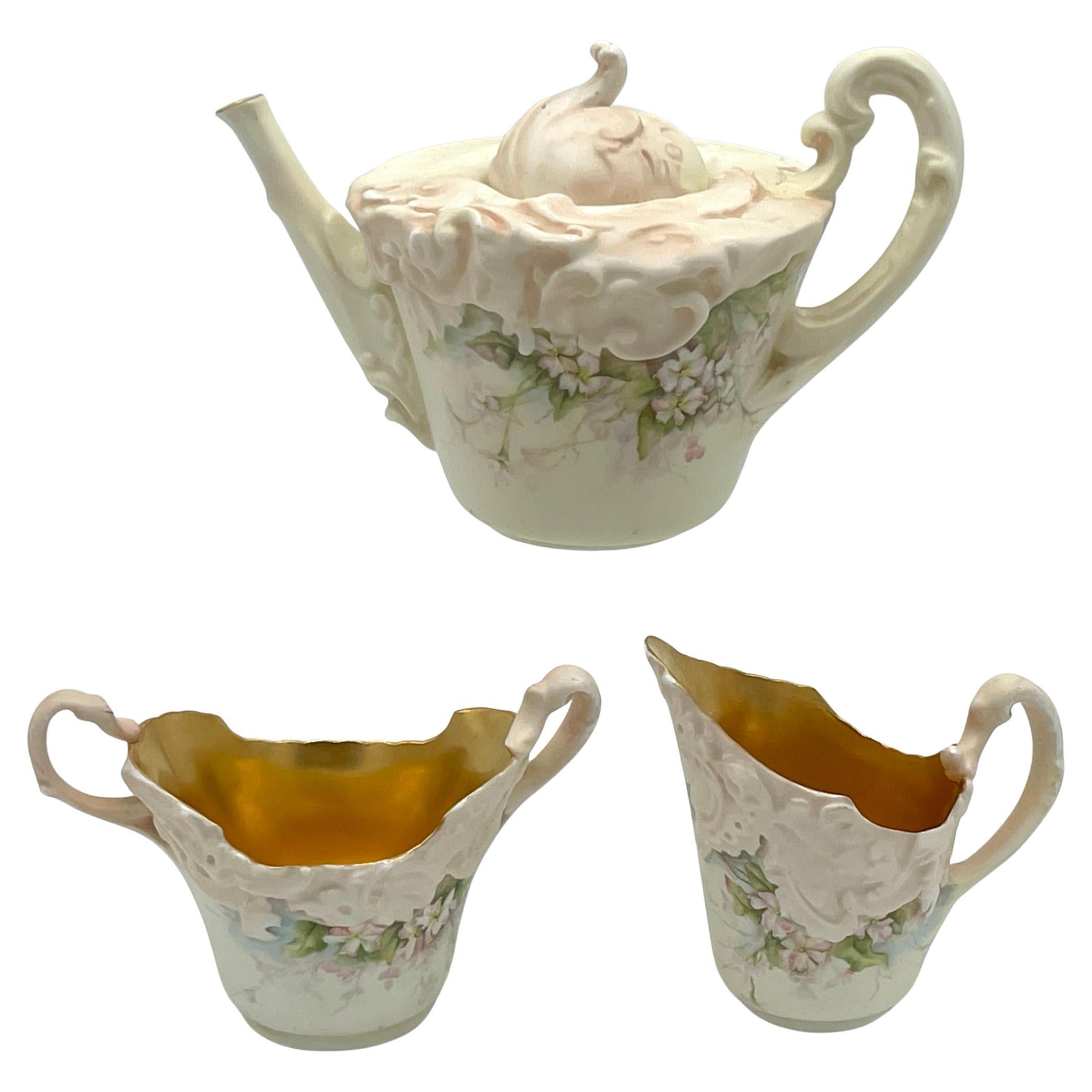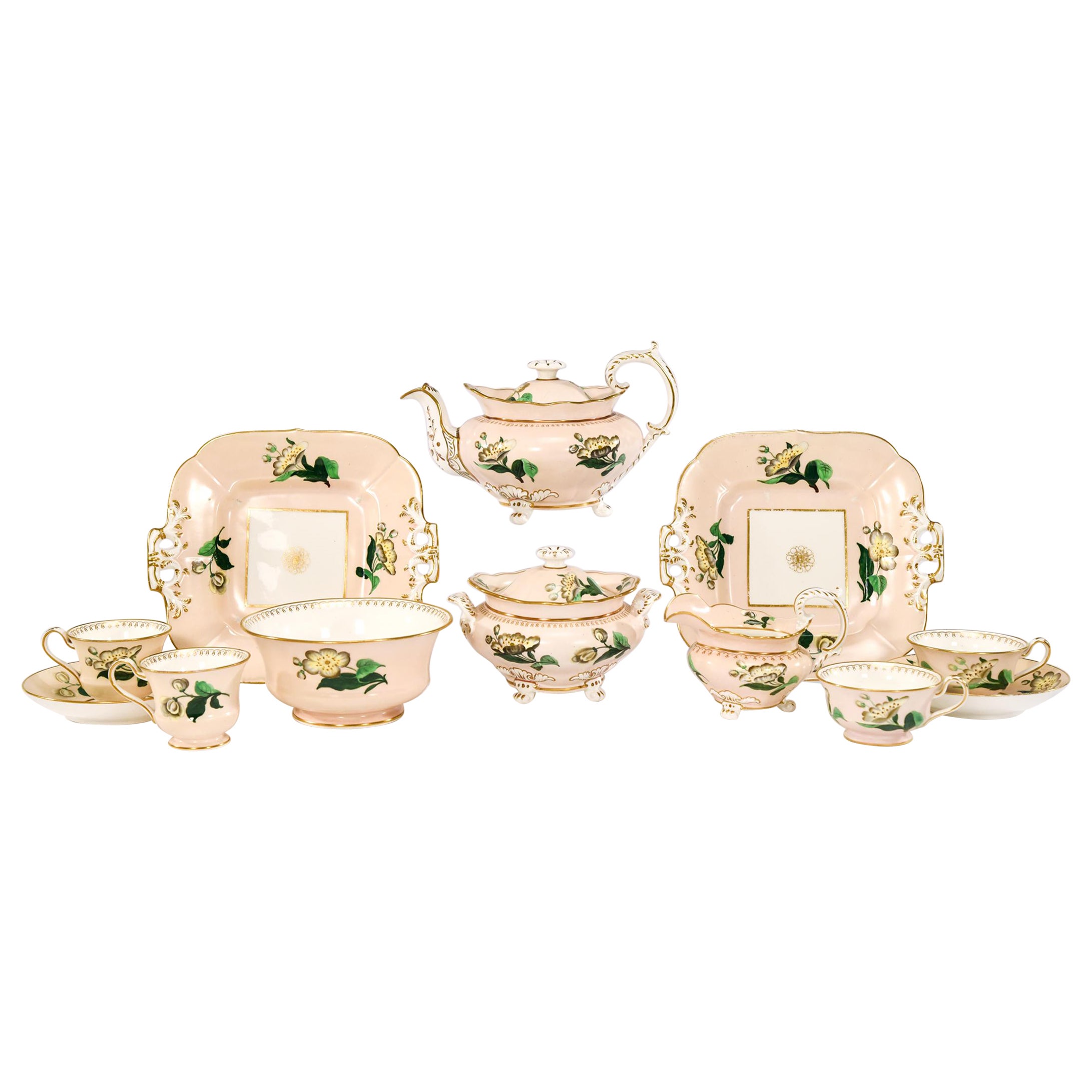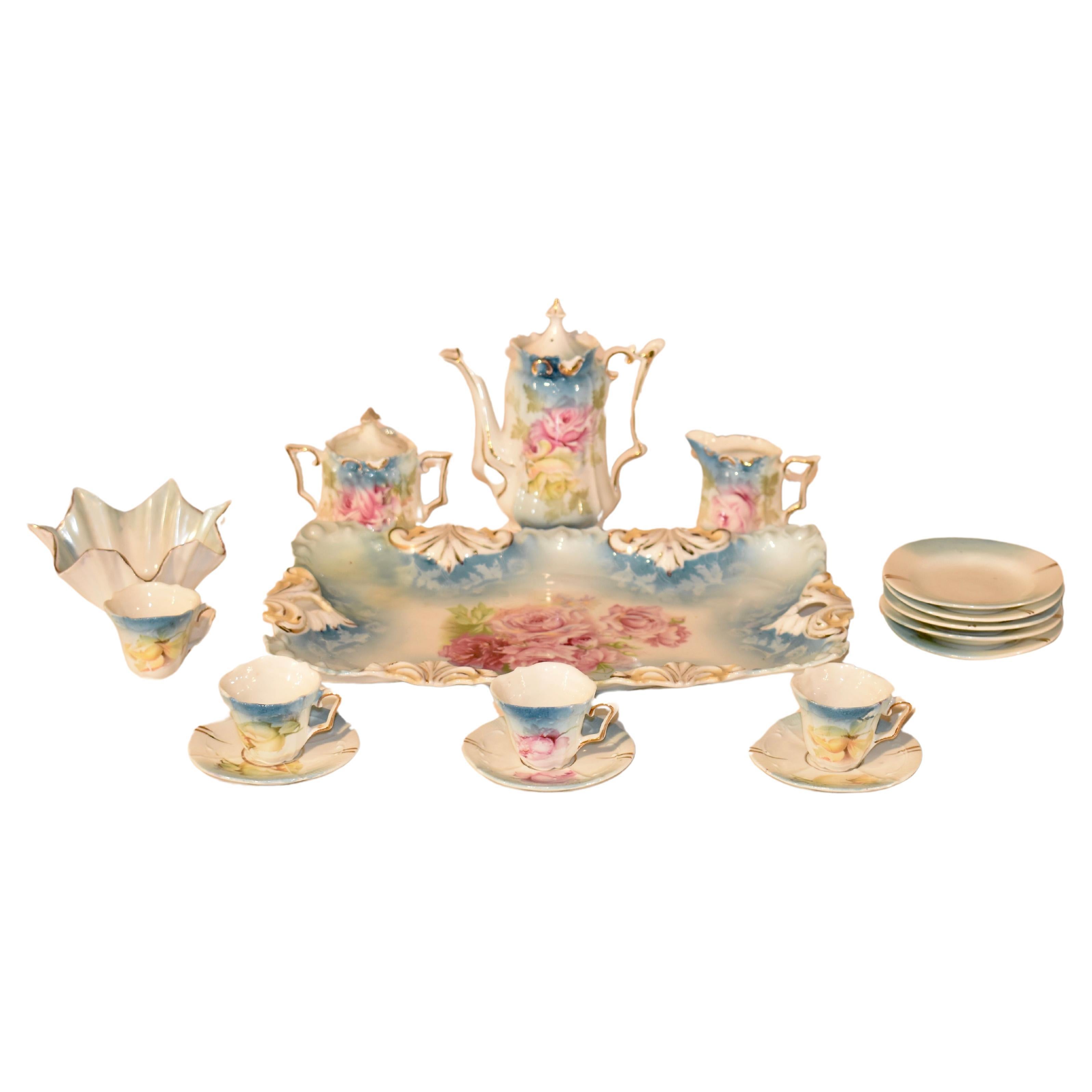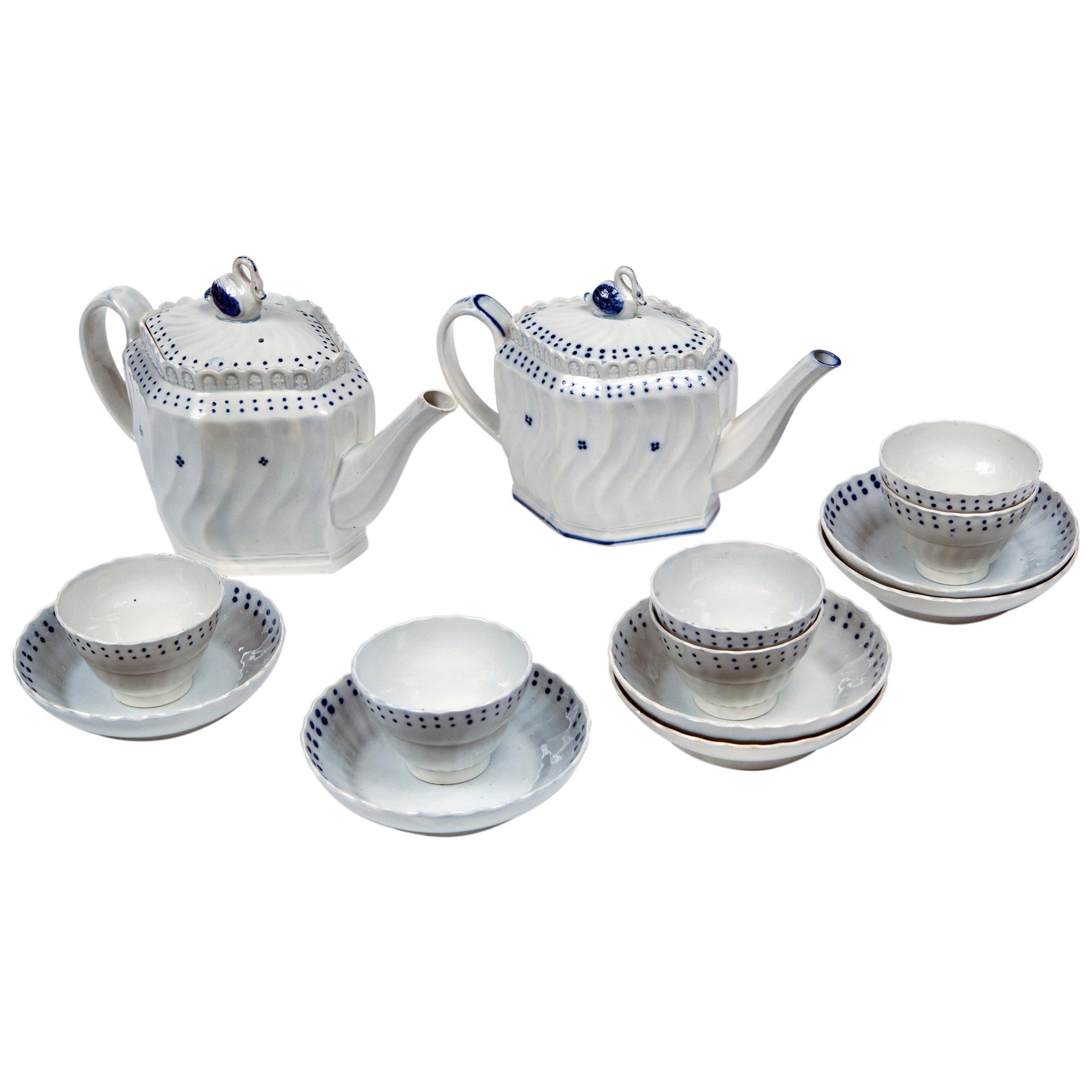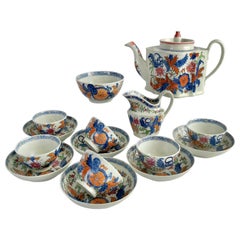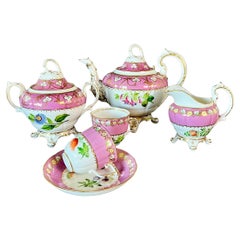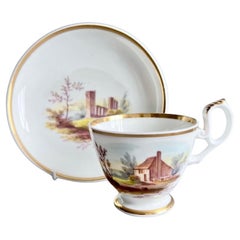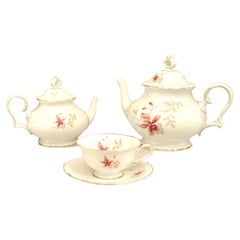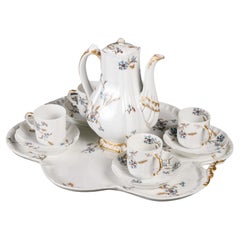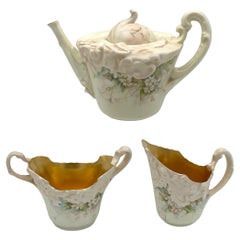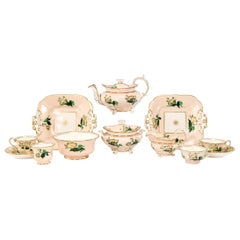Items Similar to Belleek Cabaret Tea Set for Two, Cream Grass Pattern, Victorian 1863-1891
Want more images or videos?
Request additional images or videos from the seller
1 of 17
Belleek Cabaret Tea Set for Two, Cream Grass Pattern, Victorian 1863-1891
$4,350per set
£3,302.50per set
€3,784.57per set
CA$6,174.25per set
A$6,734.55per set
CHF 3,537.83per set
MX$81,474.19per set
NOK 44,259.40per set
SEK 41,789.68per set
DKK 28,249.18per set
About the Item
This is a beautiful and very rare Belleek cabaret set in the Grass design, consisting of a teapot, two teacups and saucers, a milk jug and a lidded sugar bowl, all placed on a large tray. All items carry the 1st Black Mark, which was used between 1863 and 1891.
It is extremely rare to come across an entire cabaret set of these antique items, particularly when in such fabulous condition, so this is a rare opportunity!
If you ever thought Belleek fine china looks, sounds and feels unique, you are right. There is a back story to this extraordinarily fine Irish eggshell porcelain, which has an unusually high amount of "frit" and therefore is thinner and finer than any other china.
Pottery in Belleek (in the now Northern-Irish area of Fermanagh) had started in 1849 with John Caldwell Bloomfield, who was a wealthy land owner. During the Irish famine he realised that unless he would find a way for his tenants to make a profit off the land, they would starve. Agriculture had become impossible due to the agricultural diseases caused by mono culture at that time, and the political unrest in response to British colonial rule. This a million people to starve and another million to leave; the population had halved within a decade. As an amateur mineralogist, Bloomfield realised that his land had exactly the right mineral deposits to be used as clay for porcelain. He involved several investors and scientists and after many years of research, trial, error, the building of a railway line to import coal from England, and building a factory, the Belleek pottery resulted, employing the local people and soon producing the finest china made with clay from the Belleek area.
What had started as a way to fend off famine among the local tenants had became a story of incredible success by the 1880s as Queen Victoria fell in love with the fine white china and the many homely, slightly bizarre but nature-loving designs; this was different from English tradition, yet it was very much to the taste of the British who had developed a real love for home-made fine china since it was introduced in the late 18th Century. Soon the English nobility started to place big orders and the pottery is still flourishing today and selling its wares the world over, while in England most potteries have long disappeared.
The Grass series is one of the many Belleek designs that were inspired by nature rather than by fashion: there are sea shells, froth, seaweeds, tree roots and bark, corals and woven baskets. The Grass design is a bit rarer than many of the more nautical designs, and particularly as a cabaret set it is hard to come by. The teapot has a wonderful "duck spout", much like the famous English teapots from the 1840s, with a grinning duck's face as a spout. And it has an unusual shape: it is a kettle. Each item has grass blades and seeds embossed on it, and picked off in muted and slightly iridescent colours. The finials of the teapot and sugar pot, as well as the little handles of the sugar pot, look like cut-off wheat sheafs. The bottom of the tray is like a woven basket.
On the inside of the teapot cover is a message with instructions on how to brew tea; this is how Belleek educated second-generation Irish Americans who liked to buy Belleek porcelain but hadn't necessarily learned how to brew tea the proper way.
CONDITION REPORT The set is in fabulous antique condition without damage, repairs, crazing or significant wear except a tiny chip off the lower part of the duck spout, and a little chip off the rim of the milk jug. Neither affects their usability and they are hard to notice. As in many Belleek tea sets, the colours on the various items are slightly different.
Antique porcelain is never perfect. Kilns were fired on coal in the 1800s and early 1900s, and this meant that china from that period can have some firing specks from flying particles. Makers were also known for their experimentation, and sometimes this resulted in technically imperfect results. Due to the shrinkage in the kiln, items can have small firing lines or develop crazing over time, which should not be seen as damage but as an imperfection of the maker's recipes, probably unknown at the time of making. Items have often been used for many years and can have normal signs of wear, and gilt can have signs of slight disintegration even if never handled. I will reflect any damage, repairs, obvious stress marks, crazing or heavy wear in the item description but some minor scratches, nicks, stains and gilt disintegration can be normal for vintage items and need to be taken into account.
There is widespread confusion on the internet about the difference between chips and nicks, or hairlines and cracks. I will reflect any damage as truthfully as I can, i.e. a nick is a tiny bit of damage smaller than 1mm and a chip is something you can easily see with the eye; a glazing line is a break in the glazing only; hairline is extremely tight and/or superficial and not picked up by the finger; and a crack is obvious both to the eye and the finger. Etcetera - I try to be as accurate as I can and please feel free to ask questions or request more detailed pictures!
DIMENSIONS to be added, please feel free to ask!
- Creator:Belleek Pottery Ltd. (Maker)
- Dimensions:Height: 1 in (2.54 cm)Width: 1 in (2.54 cm)Depth: 1 in (2.54 cm)
- Sold As:Set of 10
- Style:Victorian (In the Style Of)
- Materials and Techniques:
- Place of Origin:
- Period:
- Date of Manufacture:1863-1891
- Condition:Wear consistent with age and use. In excellent antique condition without any repairs, crazing or wear, a tiny chip off the underside of the spout but good for use.
- Seller Location:London, GB
- Reference Number:Seller: A-BEL121stDibs: LU4805127489472
About the Seller
5.0
Vetted Professional Seller
Every seller passes strict standards for authenticity and reliability
Established in 2016
1stDibs seller since 2019
227 sales on 1stDibs
Typical response time: 1 hour
- ShippingRetrieving quote...Shipping from: London, United Kingdom
- Return Policy
Authenticity Guarantee
In the unlikely event there’s an issue with an item’s authenticity, contact us within 1 year for a full refund. DetailsMoney-Back Guarantee
If your item is not as described, is damaged in transit, or does not arrive, contact us within 7 days for a full refund. Details24-Hour Cancellation
You have a 24-hour grace period in which to reconsider your purchase, with no questions asked.Vetted Professional Sellers
Our world-class sellers must adhere to strict standards for service and quality, maintaining the integrity of our listings.Price-Match Guarantee
If you find that a seller listed the same item for a lower price elsewhere, we’ll match it.Trusted Global Delivery
Our best-in-class carrier network provides specialized shipping options worldwide, including custom delivery.More From This Seller
View AllNew Hall Porcelain Tea Service, Japanese Tobacco Pattern, Georgian, circa 1795
By New Hall
Located in London, GB
This is a stunning tea service made by New Hall in circa 1795. The service is made of hybrid hard paste porcelain and decorated in a bold Chinoiserie pattern of large flower sprays. The service consists of a teapot with cover, a milk jug, a slop bowl, and six tea bowls with saucers.
This service has provenance; it came from the collection of David Redstone, the well known porcelain expert who wrote leading books on Bow and Chelsea porcelain.
The New Hall factory started as a cooperative of several Staffordshire potters making use of the porcelain license of Bristol Porcelain...
Category
Antique 1790s English George III Tea Sets
Materials
Porcelain
$2,900 / set
Free Shipping
Samuel Alcock Matched Solitaire Porcelain Tea Set, Pink with Flowers, ca 1836
By Samuel Alcock & Co.
Located in London, GB
A matched solitaire tea set consisting of a teapot with cover, a sucrier with cover, a milk jug and a matched trio consisting of a teacup, a coffee cup and a saucer. With pink ground...
Category
Antique 1830s English Rococo Revival Tea Sets
Materials
Porcelain
$1,400 / set
Free Shipping
H&R Daniel Coffee Cup Duo, Plain Shape, White with Landscape, 1825-1830
By H&R Daniel
Located in London, GB
This is an extremely rare and beautiful coffee cup and saucer made by H&R Daniel some time between 1825 and 1830. The set is potted in the "plain" shape and bears pattern no. 4652 wi...
Category
Antique 1820s English Rococo Revival Tea Sets
Materials
Porcelain
Spode Creamware Dessert Service, Avocado Green, Chinoiserie, Regency, 1814
By Spode
Located in London, GB
This is a beautiful Spode creamware dessert service made in 1814, which was the Regency era. The service is decorated in a printed and hand-colored Chi...
Category
Antique 1810s English Regency Porcelain
Materials
Creamware
Chamberlains Worcester Dessert Service, White with Flowers, Regency, ca 1822
By Chamberlains Worcester
Located in London, GB
This is a spectacular and rare dessert service made by Chamberlains Worcester in about 1822. The service consists of a high comport, 2 square dishes, 1 kidney shaped dish, 3 shell di...
Category
Antique 1820s English Regency Dinner Plates
Materials
Porcelain
Spode Dessert Service, Ship Pattern no. 3133 on Stone China, 1813-1822
By Spode
Located in London, GB
This is a stunning and rare Spode dessert service made between 1813 and 1822, consisting of a centre piece, a lozenge shape dish, four shell dish...
Category
Antique 1810s English Regency Porcelain
Materials
Stoneware
You May Also Like
22 Piece Bavarian White Porcelain Chippendale Tea Set
Located in Queens, NY
22-Piece Continental German (Bavarian) (19/20th Century) white porcelain "Chippendale" pattern tea set with floral detail and gold rim (2 pots & 9 cups & 11 saucers) (PRICED AS SET)
Category
Antique 19th Century German Biedermeier More Dining and Entertaining
Materials
Porcelain
Limoges Porcelain Tea and Coffee Set.
Located in Saint-Ouen, FR
" Limoges Porcelain Tea and Coffee Set. "
Porcelain tea or coffee service, composed of 4 cups and saucers, a teapot and a tray, 20th century.
h: 2...
Category
20th Century French Louis XV Tea Sets
Materials
Porcelain
$2,152 / set
Doulton Burslem Blush Ivory 3 Piece Tea Set with Apple Blossom Decoration, 1889
By Doulton Burslem
Located in West Palm Beach, FL
Doulton Burslem Blush Ivory Three-Piece Tea Set with Apple Blossom Decoration, 1889
England, Dated by Registration to 1889
Teapot: 8" W x 5.5" H x 5" D
Creamer: 4.5" W x 4" H
Suga...
Category
Antique Late 19th Century English High Victorian Tea Sets
Materials
Porcelain
19th C. Spode 44 Pc. Porcelain Tea Set
By Spode
Located in Great Barrington, MA
This Classic 19th century Spode Dessert and tea and coffee service encompasses the beauty of the period as well as the elegant floral decoration. The com...
Category
Antique 1850s English Victorian Tea Sets
Materials
Porcelain
19th Century R.S. Prussia Children's Tea Set
By RS Prussia
Located in High Point, NC
19th century RS Prussia incomplete child's tea set. The set includes a tray, tea to, sugar and creamer, waste bowl, 4 small cups and 3 saucers and 5 small plates. The measurements ...
Category
Antique 19th Century German Serving Pieces
Materials
Ceramic
English Pearlware Tea Set, Early 19th Century
Located in Chappaqua, NY
English Pearlware tea set, early 19th century. Two tea pots with swan finials. Six tea bowls and matching saucers. Delicate white porcelain with grap...
Category
Antique Early 19th Century English Tea Sets
Materials
Pearlware
$1,100 / set
More Ways To Browse
Antique Furniture Northern Ireland
Antique Eggshell Porcelain
Cabaret Set
Chinese Tea Basket With Teapot
19th Century Belleek
Tea Set For Two
American Belleek
Antique Belleek Pottery Ireland
Irish Silver Tea Set
Irish Tea Set
Belleek China
Cabaret Tea Set
Belleek Cabaret
Belleek Grass Pattern
Belleek Tea Set
Antique Sterling Silver Tea Service
Tea Cups Italy
Vintage Brass Tea Set
